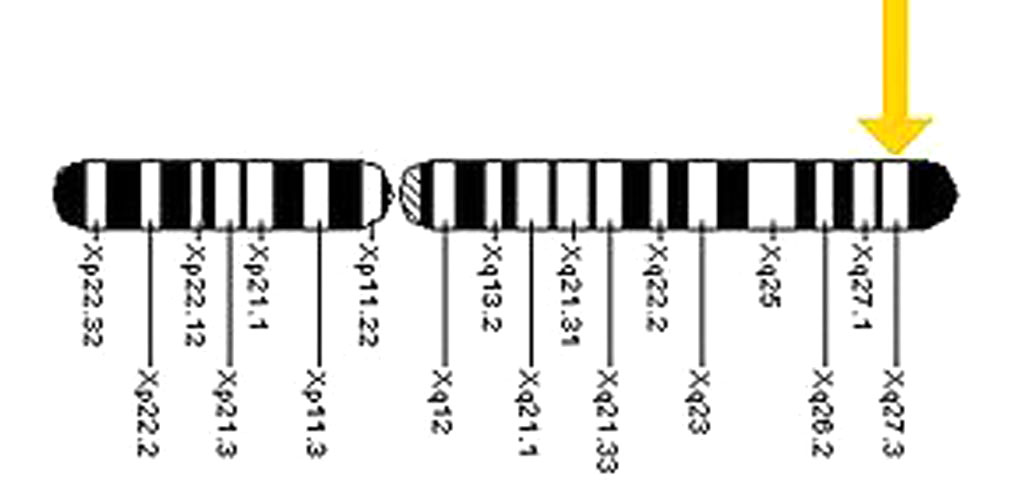Gene Editing Reverses Fragile X Syndrome in Model
By LabMedica International staff writers
Posted on 05 Mar 2018
A modified version of the CRISPR/Cas9 gene-editing tool was used to correct the mutation that causes fragile X syndrome.Posted on 05 Mar 2018
Fragile X syndrome is a genetic disorder that occurs as a result of a mutation of the fragile X mental retardation 1 (FMR1) gene on the X chromosome, most commonly an increase in the number of CGG (cytosine, guanine, guanine) trinucleotide repeats in the 5' untranslated region of FMR1. Mutation at that site is found in one out of about every 2000 males and one out of about every 259 females. Incidence of the disorder itself is about one in every 3600 males and one in 4000–6000 females.

Image: The location of the FMR1 gene on the X chromosome (Photo courtesy of Wikimedia Commons).
In unaffected individuals, the FMR1 gene contains five to 44 repeats of the sequence CGG, most commonly 29 or 30 repeats. From 45-54 repeats is considered a "grey zone", while a pre-mutation allele is generally considered to be between 55 and 200 repeats in length. Individuals with fragile X syndrome have a full mutation of the FMR1 allele, with over 200 CGG repeats. In these individuals with a repeat expansion greater than 200, there is methylation of the CGG repeat expansion and FMR1 promoter, leading to the silencing of the FMR1 gene and a lack of its product. This methylation of FMR1 is believed to result in constriction of the X chromosome, which appears "fragile" under the microscope at that point, a phenomenon that gave the syndrome its name.
CRISPR/Cas9 is regarded as the cutting edge of molecular biology technology. CRISPRs (clustered regularly interspaced short palindromic repeats) are segments of prokaryotic DNA containing short repetitions of base sequences. Each repetition is followed by short segments of "spacer DNA" from previous exposures to a bacterial virus or plasmid. Since 2013, the CRISPR/Cas9 system has been used in research for gene editing (adding, disrupting, or changing the sequence of specific genes) and gene regulation. By delivering the Cas9 enzyme and appropriate guide RNAs (sgRNAs) into a cell, the organism's genome can be cut at any desired location. The conventional CRISPR/Cas9 system is composed of two parts: the Cas9 enzyme, which cleaves the DNA molecule and specific RNA guides that shepherd the Cas9 protein to the target gene on a DNA strand.
Investigators at the Whitehead Institute for Biomedical Research (Cambridge, MA, USA) reported in the February 15, 2018, online edition of the journal Cell that they used the dCas9-Tet1/single guide RNA version of CRISPR/Cas9 to reverse hypermethylation of the FRM1 gene in induced pluripotent stem cells that had been derived from fragile X syndrome individuals. The result of editing was a reactivated gene that rescued fragile X syndrome neurons. FMR1 expression in edited neurons was maintained for more than three months in vivo after engrafting into the mouse brain.
"These results are quite surprising - this work produced almost a full restoration of wild type expression levels of the FMR1 gene," said senior author Dr. Rudolf Jaenisch, professor of biology at the Massachusetts Institute of Technology. "Often when scientists test therapeutic interventions, they only achieve partial restoration, so these results are substantial. This work validates the approach of targeting the methylation on genes, and it will be a paradigm for scientists to follow this approach for other diseases."
Related Links:
Whitehead Institute for Biomedical Research
Massachusetts Institute of Technology













